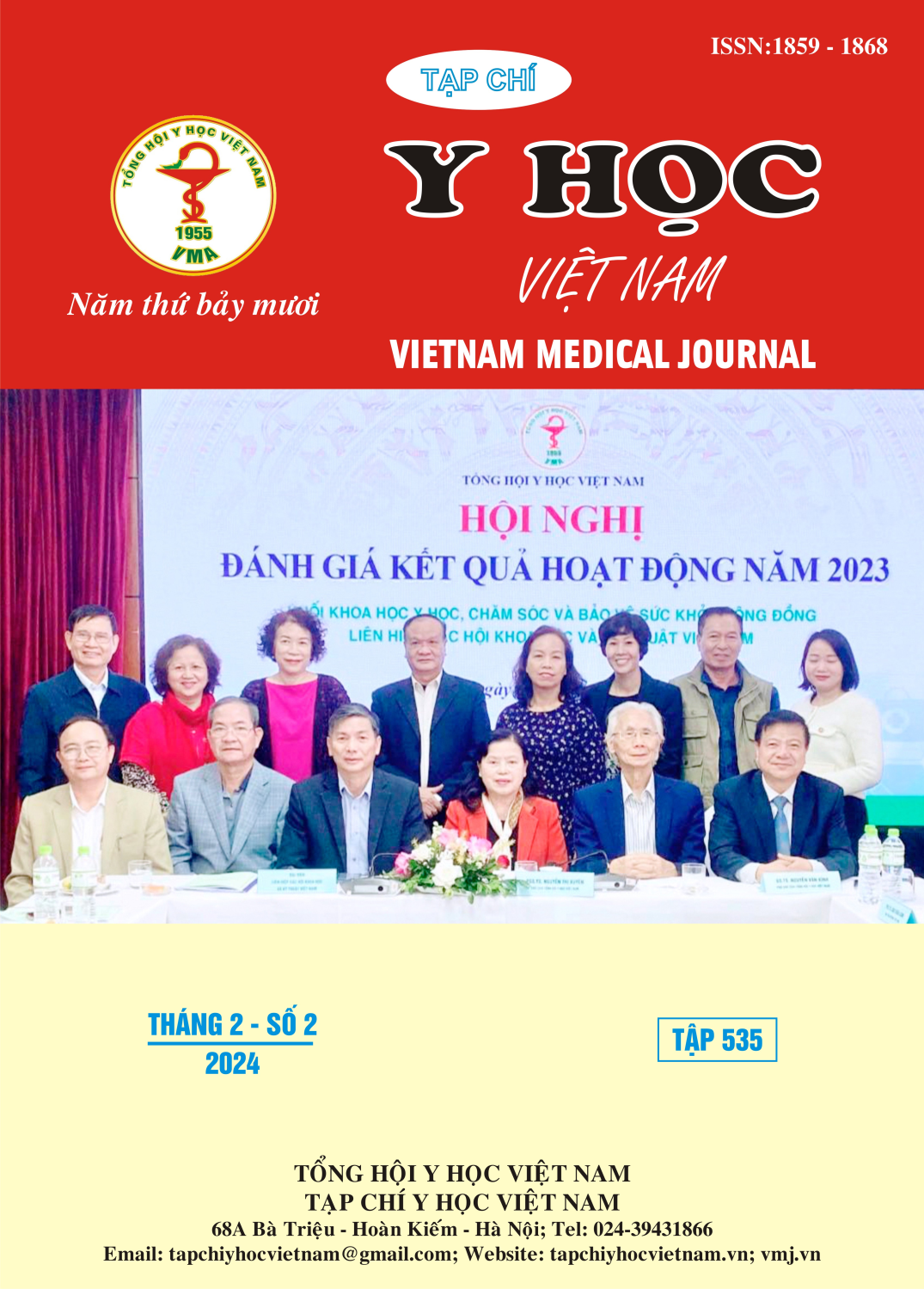THE RATE OF MYOPIA AND SOME FACTORS RELATED TO THE RATE OF MYOPIA IN ELEMENTARY SCHOOL STUDENTS AT VINH CITY, NGHE AN PROVINCE
Main Article Content
Abstract
Objectives: Determine the rate of myopia and evaluate some factors related to the rate of myopia in elementary school students in Vinh city, Nghe An province. Subjects and methods: Cross-sectional descriptive study, on 3161 elementary school students (aged 6-10) at primary schools in Vinh City - Nghe An from August 2022 to the end of May 2023. Results: The rate of myopia in elementary school students is 31.3%. Mild myopia (≥ – 3.0D) accounts for 61.2% and bilateral myopia accounts for 91.0%; There are 23.7% of myopia elementary school students who do not wear glasses and 27.2% of students wear glasses with the wrong degree in one or both eyes. The lowest myopia rate in grade 1 students (6 years old) is 22.7% and gradually increases in higher grades, the highest in grade 5 students (10 years old) is 37.3%, the difference is statistically significant. There is a statistically significant relationship between the rate of myopia and family factors; Students whose parents are both myopic have the highest rate of myopia (39.7 %); Students whose siblings are myopia have a higher rate of myopia than other students. The myopia rate was lowest in the group with near vision for less than 2 hours and gradually increased with near vision time, highest in the group with near vision time of over 6 hours. There is no relationship between the rate of myopia with gender, ethnicity and outdoor activity time of students in our study
Article Details
Keywords
Myopia, the rate of myopia, elementary school students.
References
2. Tran Đình Minh Huy (2021), "A Meta-Analysis Assessing Change in Pupillary Diameter, Accommodative Amplitude, and Efficacy of Atropine for myopia control, asia pacific academy of Ophthalmology, pp. 1-10.".
3. Vũ Thị Thanh, Đoàn Văn Hậu, Hoàng Thị Phúc (2009), "Mô tả đặc điểm cận thị học đường ở học sinh tiểu học và trung học cơ tại Hà Nội," Tạp chí Y học Thực Hành, vol. số 02/2014, pp. pp92-94.
4. Vũ Tuấn Anh (2021), "Tỷ lệ tật khúc xạ của học sinh tiểu học và trung học cơ sở tại 3 tỉnh Tiền Giang, Đà Nẵng. Hải Dương năm 2017," Tạp chí y học Việt Nam, vol. 502 , pp. pp 207-210.
5. Nguyễn Thị Huyền (2002), "Thực trạng cận thị của học sinh tại một số tỉnh ở Việt Nam năm 2019," Tạp chí Y học dự phòng, vol. tập 30 S4, pp. pp136-146.
6. Jenchitr W., Raiyawa S. (2012), "Refractive Errors: The Major Visual Impairment in Thailand”, Rangsit Journal of Arts and Sciences, 2(2), pp. 133-141.".
7. Chu Văn Thăng, Trần Thị Thu Hương, Lê Thị Thanh Xuân (2015), "Thực trạng cận thị học đường ở học sinh thành phố Đà Lạt và huyện Bảo Lâm, tỉnh Lâm Đồng năm 2012-2013", Tạp chí Y học dự phòng. 6(166).".
8. Saw SM (2002), "Component dependent risk factors for ocular parameters in Singapore Chinese children," Ophthalmology, Vols. 109(11), 2065-71.
9. Rose KA (2008), "Outdoor activity reduces the prevalence of myopia in children," Ophthalmology, Vols. 115(8), 1279-85.
10. Rudnicka A.R., Kapetanakis V.V., A.K. Wathern, Logan N.S., Gilmartin B., Whincup P.H., Cook D.G., Owen C.G. (2016), "Global variations and time trends in the prevalence of childhood myopia, a systematic review and quantitative meta-analysis: implications for aetiology and early prevention",," British Journal of Ophthalmology. 100(7), pp. 882-890.


